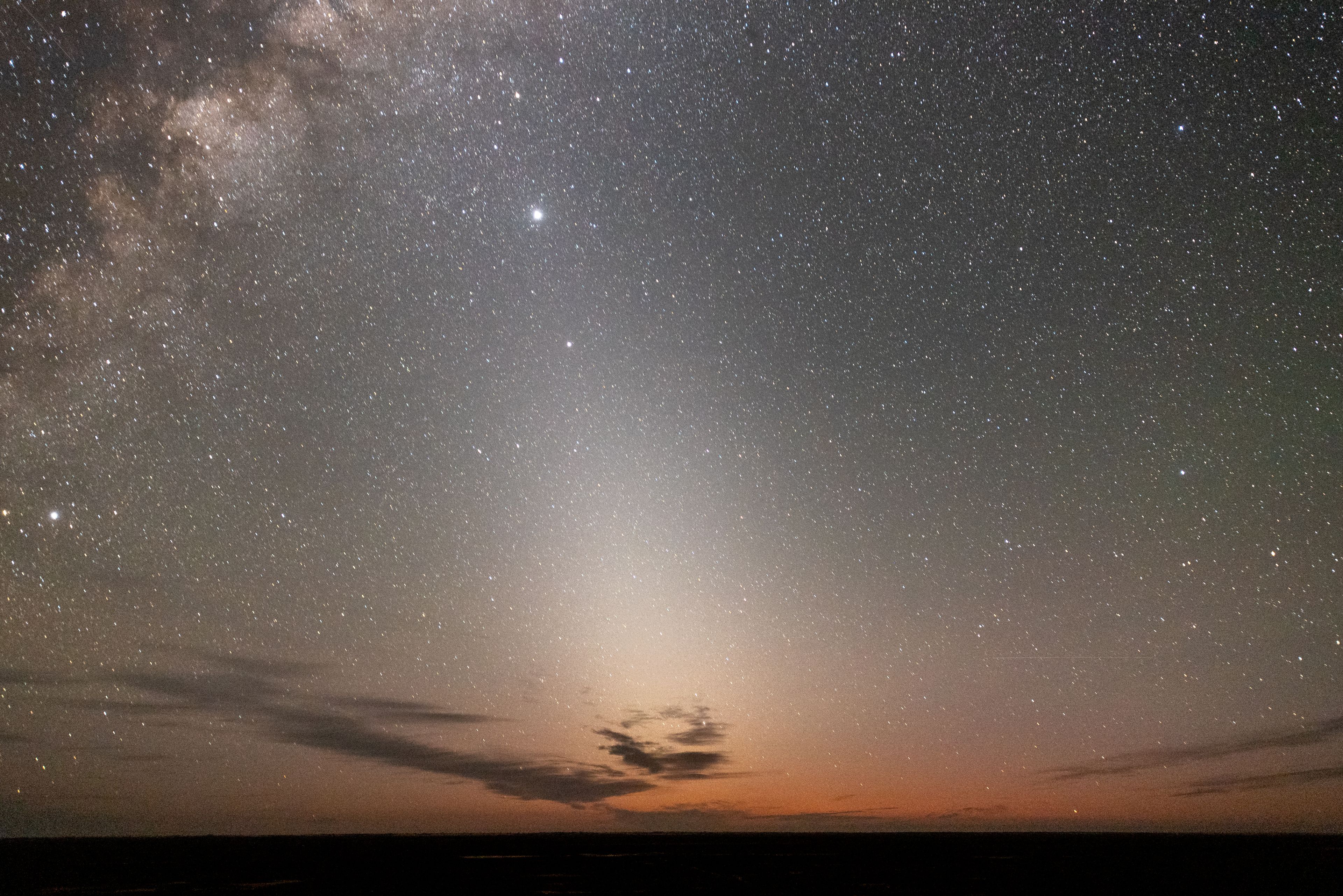Home/Curriculum resources/Stellar scintillation /Activity 2 - Observing Twinkling Stars
Learning Area:
Science
Year level:
Level 8
Suggested timing:
One to two weeks

Activity 2 - Observing Twinkling Stars
This activity is a part of the Stellar scintillation resource.
Zodical Light. Photographer: Peter Lieverdink. Source: Flickr. License: CC BY-SA 2.0
An out-of-class experiment that encourages students to observe stars and planets over a few nights or weeks.
Step-by-step guide
Step 1: Observation
Students are to keep a notebook of observations of planets and stars in the sky on a few given nights.
They should note if the stars and planets twinkle.
If so, is the twinkling fast or slow? Do the stars appear sharp or fuzzy?
Are the students able to distinguish between a planet and a star by observing if it twinkles?
Are the planets twinkling? What was the weather that day, and the next?
If the planet(s) twinkle, is it high in the sky or low on the horizon?
Suggest a range of freely available astronomy-related mobile apps 0 (Star Chart; NASA App; Night Sky; SkyView Lite; GoSkyWatch Planetarium; ISS Detector; Google SkyMap; SkyEye Astronomy; Star & Plane Finder; Satelite AR) that can be used by the students to check and see if the “stars” they observed were actually stars or planets.
Step 2: Discussion
The teacher can lead a discussion with the class about their results.
Teacher Note:
Teachers should know that if planets are close to the horizon, they may still twinkle. A Kamilaroi tradition from northern New South Wales tells about the planet Venus twinkling brightly when it is low on the horizon. The people see it as an old man who is laughing at a rude joke he told.6
Related activities within this resources:

Inquiry-based learning questions
These inquiry-based questions are provided for flexible classroom use, allowing teachers to tailor discussion and reflections specific to their classroom needs

Activity 1 - Uier Naskaisreda (The Twinkling Stars) song
Students will explore the scientific knowledge contained within the song Uier Naskaisreda, as a way to explore how cultural and scientific meanings are layered.
Suggested timing:
One lesson